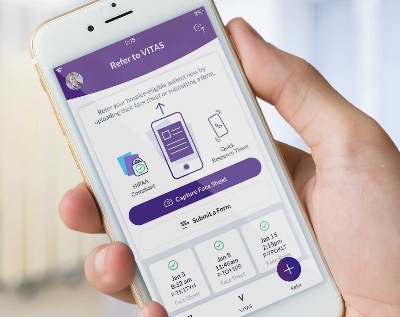Staying Prepared to Care During Hurricanes and Other Natural Disasters
By VITAS Healthcare, Senior Vice President of Operations, Central Florida, Jennifer Nygaard
When a hurricane barrels toward the Florida mainland, VITAS mobilizes on behalf of our patients and team members to help secure their safety. Planning, careful strategizing, and diversified communications enable us to respond to natural disasters while maintaining a high level of quality care throughout the crisis.
Case in point: Hurricane Irma hit Florida in September 2017 as a Category 4 storm, leaving two thirds of the state without power. VITAS leaders had already deployed the VITAS Comprehensive Emergency Management Plan when it arrived.
Hurricane Irma: A Case Study in Preparation
Before hurricane season begins, VITAS holds an emergency preparation call with leadership to align priorities and resources. Once we see a service area is in a "watch" location, the Operations leadership team and all corporate departments meet daily to collaborate. Our field programs do the same as they review emergency processes. Hurricane drills, which take place prior to June 1 each year, keep our teams prepared.
When a threat escalates, as in the case of Hurricane Irma, daily preparation calls increase to several times a day. We tap into our Care Connection Center as well as our pharmacy, facilities, admissions, communications, employee relations, and human resources teams, among others, to ensure we are in sync with our ability to provide for our patients.
For example, our durable medical equipment (DME) division runs reports that list all patients who have portable oxygen needs and a generator or back-up power support. From there, we determine a delivery schedule for portable O2, working together to ensure this transaction is seamless. Team members check if the patient will remain at the address and if a caregiver will be home to accept the delivery.
Typically, we also place extra medical supplies and water at locations outside the storm’s projected path for post-storm delivery to affected areas.
Assessing Risks to Team Member and Patient Safety
We keep track of each storm’s path, including when and where it is likely to make landfall. Our pharmacy team ensures we have local access to fill medications, so families have what they need until the storm passes. We follow a similar process with medical supplies.
In the meantime, we monitor wind speeds. Our delivery trucks cannot drive when the winds reach high speeds. Throughout Florida, bridges spanning the St. Johns River, Banana River, and Intracoastal Waterway close when wind gusts surge. Our window of time to get to our patients, deliver necessary supplies, and move patients to a safer location is narrow.
When Hurricane Irma swept across the state, few areas were untouched. As the New York Times reported, the state ordered mandatory evacuations in 16 Florida counties and voluntary evacuations in 13 more as Irma drew near.
We moved patients who resided in evacuation or flood zones based on their emergency plan form completed at admission. Many of these patients went to a hotel, shelter, or family member’s home outside of the storm area; we placed others in respite care inside a nursing home in a safer location. VITAS inpatient units (IPUs) are often full during these crises, so we arrange for our team members to remain there in shifts for their own safety and that of our patients.
During the Storm: Overcommunication Is Key
If VITAS team members are trapped by floods, find themselves unable to get food, need rescuing, or require help with housing, they contact our emergency staff number. We train our employees to remain calm and communicate several times a day with their management team about patient needs as well as their own. We balance ensuring our staff is prepared to respond to patients with their own safety and security, including following all county and state guidelines for traveling on area roads.
In addition to our local team members, our Telecare service monitors patients 24/7/365 from multiple locations throughout the country.
During Irma, when some areas of the state were completely flood-bound, VITAS patients spent their last days in clean, safe surroundings with their loved ones and our continuous care teams by their sides. We worked closely with emergency response teams including police, fire, the sheriff’s office, and the coast guard to make arrangements.
After the Storm Passes: Addressing Practical Needs
In the event of a mass power outage, our team members have no way to get fuel in their vehicles to go to see patients. During Irma, VITAS moved our fuel truck across South and Central Florida for team members to fill up their cars. This allowed them to care for their own needs while continuing to visit patients.
As the storm subsided, we checked our offices for damage and tested the power. If the office was secure and had power, we issued a return-to-work message via our phone trees. From there, we checked on every single patient again and followed up with patients who called during the storm.
VITAS has cared for Floridians through 45 hurricane seasons and counting. This depth of experience has enabled VITAS to develop a solid process for managing emergent and pivotal crises during our patients’ hospice journey.
With hospice services in 15 states and the District of Columbia, VITAS can reposition and temporarily allocate team members to support VITAS locations throughout the country—both in person and remotely—so that our patients continue to receive high-quality care.

Tips for Effective Goals-of-Care Discussions
Conduct more effective goals-of-care discussions with your patients by using this conversation starter guide.
Download Now Clinicians: Receive Our Newsletters
